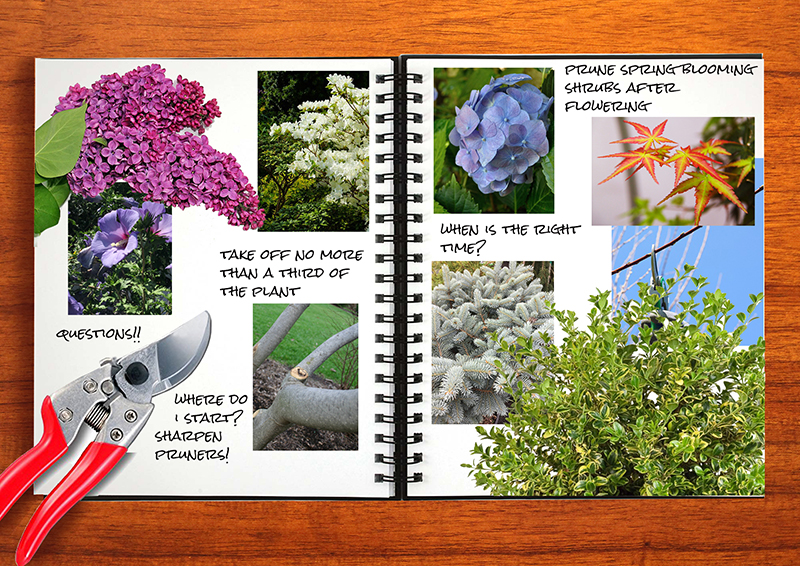Why Prune?
Pruning maintains the health and beauty of your shrubs and trees. Pruning not only shapes a plant to enhance your yard and garden but helps the plant to succeed by encouraging growth, keeping it healthy, and promoting more flowers and fruit.
Light – By selectively pruning out some branches, trees and shrubs will appreciate more light reaching their inner branches and leaves.
Vigor – Pruning helps trees and shrubs to produce more flowers and fruit by spurring bud formation.
Shape – Even natural looking plants have a growth habit that can become unbalanced or unattractive. Hedges and plants with imposed shapes such as spirals and spheres need pruning and trimming to remain “in shape”.
Health – Pruning removes dead and damaged branches. Branches that rub together or cross each other have a good chance of developing wounds which may invite diseases. They can also compromise the health of the main branch. Pruning also allows for air to circulate around interior branches especially important for fruit trees.
General Rules of Thumb for Pruning
- It is best to take off no more than a third of a tree or shrub at one time.
- It is best to prune while a plant is not in its most vigorous period of growth. Pruning during plant dormancy is best.
- Remove crossing branches.
- Removing stray, damaged, diseased branches can be done any time of year.
- Don’t remove the “central leader” on evergreens. It is the topmost vertical branch. Think of the top of a Christmas tree. If one becomes damaged, a new leader can be staked up to take its place.
- In our area, pruning after the middle of August could encourage new growth that won’t have time to “harden off” before the plant gets ready for dormancy.
- When removing a branch, make the cut as close to the branch it’s being removed from. “bark to bark” is easy to remember.
When to Prune
- Prune shrubs and trees that flower in the spring after the blooms have faded and blooming is finished. Prune before mid-July.
- Prune shrubs and trees that flower in the summer the next winter or early spring.
- Prune non-flowering deciduous trees in early summer.
- Prune evergreens in late winter before new growth begins or in summer after new growth.

